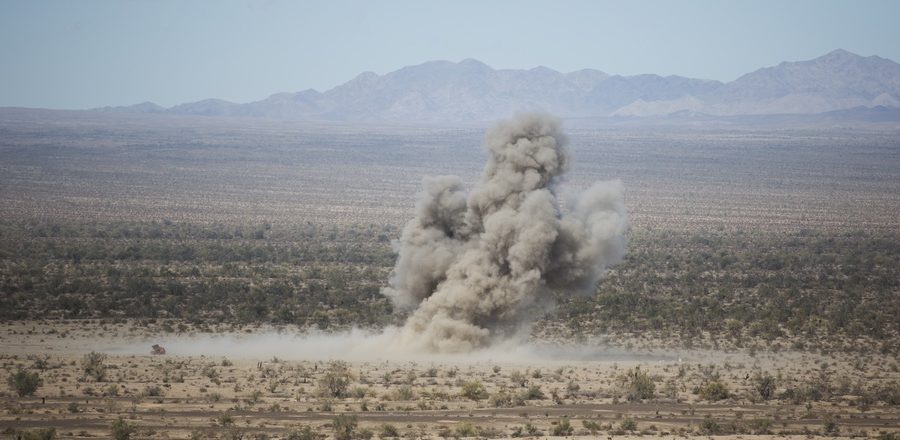The Biden administration announced a massive new aid package for Ukraine on Jan. 6, totaling over $3 billion and including armored infantry fighting vehicles, Zuni rockets, and other weapons once considered off-limits.
The Pentagon will send 50 Bradley fighting vehicles, which American defense officials said will help Ukraine push Russian forces back and regain territory in the east and south of the country, as part of a $2.85 billion package from Pentagon stocks. The U.S. will also send $682 million to countries on NATO’s eastern flank, which have depleted their own arsenals to come to Ukraine’s aid. An additional $225 million will be given to Ukraine to “cover wartime requirements” and support the sustainment of previously provided weapons systems, according to the State Department.
The latest package also includes new air capabilities. In a bid to bolster Ukraine’s air force, the U.S. will send 4,000 Zuni rockets, which can be fired at ground targets. The U.S. also recently announced it was sending Joint Direct Attack Munitions (JDAMs) to Ukraine. Previously, the Pentagon had focused on sending AGM-88 High-speed Anti-Radiation Missiles, which could attack Russian surface-to-air missile sites. However, the Zuni and the JDAMs give Ukraine’s air force a new strike capability.
“In terms of providing Ukraine with capability for their aircraft, it’s actually something we’ve been working on for a while,” Laura Cooper, deputy assistant secretary of Defense for Russia, Ukraine, and Eurasia, said in a briefing at the Pentagon. “This is really just the latest in efforts to help them to make their existing aircraft fleet as effective as possible.”
Cooper said the Zuni rockets could be mounted on fixed-wing or rotary-wing aircraft.
“It’s-air to-ground, but it’s at fairly close range,” she said.
The Zuni rockets have laser-guided and unguided versions, and it was not immediately clear which type the U.S. was providing. When asked how Ukraine would employ rockets designed for American aircraft onto aircraft designed in the Soviet Union, Cooper cracked a wry smile.
“I trust our engineers, and I definitely trust the Ukrainian engineers,” she said. And “It is something that is possible.”
In the latest effort to help meet Ukraine’s air defense needs, the U.S. will also provide RIM-7 Sea Sparrow missiles that will be modified for use in Ukrainian Buk launchers.
“It is a creative solution that did require some engineering finesse,” Cooper said of using American surface-to-air missiles in Russian-made launchers. “But we’re very pleased that it will work for the Ukrainians.”
Ukraine has come under attack from Russian drones, cruise missiles, and ballistic missiles, and the U.S. and its allies have scrambled to provide better air defenses.
In a move lauded by the Biden administration, Germany recently announced it would provide an advanced PATRIOT battery, a system that costs hundreds of millions of dollars and can help protect key areas of Ukraine as Russia seeks to pummel the country into submission from the air during winter. The U.S. pledged one of its prized PATRIOT systems in December.
“We will continue to support Ukraine’s urgent requirement for air defense capabilities to defend against Russia’s brutal attacks,” Cooper said. “Ukrainian forces are showing an undiminished will to fight to defend their country. Ukraine will continue fighting through the winter with the backing of a large coalition of nations, and we continue to encourage allies and partners to make additional donations to bolster Ukraine’s combat and air defense capabilities.”
The M2A2 Bradley is a tracked vehicle that can carry around half a dozen soldiers into battle. The U.S. will also support the Bradleys with 500 TOW anti-tank missiles and 250,000 rounds of 25-millimeter ammunition, as well as self-propelled artillery for the first time.
The U.S. is still declining to provide tanks to Ukraine, but Pentagon press secretary Brig. Gen. Patrick S. Ryder argued the Bradley is “not a tank, but it’s a tank-killer.”
The latest U.S. package includes:
- 50 Bradley infantry fighting vehicles with 500 TOW anti-tank missiles and 250,000 rounds of 25mm ammunition;
- 100 M113 Armored Personnel Carriers;
- 55 Mine Resistant Ambush Protected Vehicles (MRAPs);
- 138 High Mobility Multipurpose Wheeled Vehicles (HMMWVs);
- 18 155mm self-propelled Howitzers and 18 ammunition support vehicles;
- 70,000 155mm artillery rounds;
- 500 precision-guided 155mm artillery rounds;
- 1,200 155mm rounds of Remote Anti-Armor Mine (RAAM) Systems;
- 36 105mm towed Howitzers and 95,000 105mm artillery rounds;
- 10,000 120mm mortar rounds;
- Additional ammunition for High Mobility Artillery Rocket Systems (HIMARS);
- RIM-7 missiles for air defense;
- 4,000 Zuni aircraft rockets;
- Approximately 2,000 anti-armor rockets;
- Sniper rifles, machine guns, and ammunition for grenade launchers and small arms;
- Claymore anti-personnel munitions;
- Night vision devices and optics;
- Spare parts and other field equipment.
